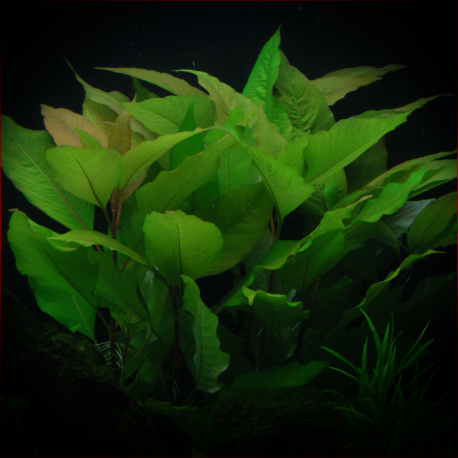More info
Datasheet
| Aquarium Compatible | yes |
| Plant Outdoor | unknown |
| Plant Emersed Growth | yes |
| Plant Growth | fast |
| Temperature Tolerance | 18°C / 64.40°F - 30°C / 86.00°F |
| Temperature | 24°C / 75.20°F - 28°C / 82.40°F |
| Carbonate Hardness | 2-18 kh |
| pH Value | 5.5-7.5 ph |
| Light | medium-high |
| Carbon Dioxide (CO2) | 10-40mg/lmg/l |
| Nitrate (NO3-) | 10-50mg/lmg/l |
| Phosphate (PO43-) | 0.1-3mg/lmg/l |
| Potassium (K+) | 5-30mg/lmg/l |
| Iron (Fe) | 0.01-0.5mg/lmg/l |
General Description
Hygrophila corymbosa, also known as Hygrophila stricta (Nees) Lindau, is a fast-growing stem plant belonging to the genus Hygrophila in the family Acanthaceae. It is a flowering aquatic plant commonly found in the order Lamiales. This plant can grow emersed and is categorized as a semi-emersed plant for open tanks.
Aquarium Suitability
With its very easy care requirements, Hygrophila corymbosa is suitable for aquariums, making it a popular choice among aquarists. It can be used in various roles within the tank, serving as a background, midground, or even as a part of the Street (Dutch style) aquascape.
Demands and Hardiness
Hygrophila corymbosa thrives in medium to high light conditions and requires carbon dioxide levels between 10-40mg/l for optimal growth. It can tolerate temperatures ranging from 24-28°C and has a tolerance range of 18-30°C. The plant's winter hardiness makes it unsuitable for outdoor use in colder climates.
Aquascaping & Usage
This plant's fast growth and adaptability make it an excellent choice for aquascaping purposes. It can be used to create lush background plantings or as a transitional midground plant to add depth to the aquarium layout. Its versatility allows it to be incorporated into various aquascaping styles.
Propagation
Hygrophila corymbosa can be easily propagated through cuttings. Once established, it will readily grow new shoots that can be replanted to expand the plant's coverage in the aquarium.
Habitat and Distribution
Hygrophila corymbosa is native to areas with water conditions featuring a pH range of 5.5-7.5 and nitrate levels between 10-50mg/l. It thrives in environments with moderate carbonate hardness (2-18) and phosphate levels ranging from 0.1-3mg/l. The plant is commonly found in tropical regions, where it grows submerged in freshwater habitats.

